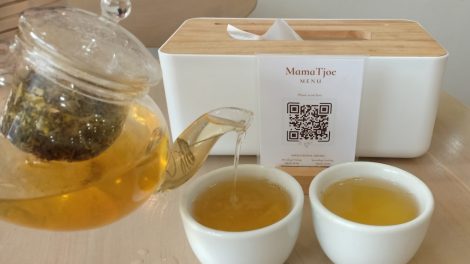Taoist Tai Chi has a rich history that intertwines with the philosophical and spiritual traditions of Taoism, which originated in ancient China. As I delve into its origins, I find myself captivated by the way this practice has evolved over centuries. The roots of Tai Chi can be traced back to the 12th century, where it was initially developed as a martial art.
However, it was not until the 20th century that it began to be recognized for its health benefits and meditative qualities. The founder of the Taoist Tai Chi Society, Master Moy Lin-shin, played a pivotal role in bringing this practice to the West in the 1970s. His vision was to create a form of Tai Chi that was accessible to everyone, regardless of age or physical ability.
As I explore further, I realize that the essence of Taoist Tai Chi lies in its connection to the principles of Taoism itself. The philosophy emphasizes harmony with nature, balance, and the flow of energy, or “Qi.” This connection is evident in the movements of Tai Chi, which mimic the natural rhythms of life. The practice encourages practitioners to cultivate a sense of inner peace and alignment with their surroundings.
It is fascinating to see how this ancient art form has transcended its martial origins to become a holistic practice that promotes well-being and mindfulness.
Key Takeaways
- Taoist Tai Chi originated from the ancient Taoist philosophy and the principles of yin and yang, emphasizing balance and harmony in movement.
- The practice of Taoist Tai Chi focuses on relaxation, proper body alignment, and the integration of mind and body.
- Taoist Tai Chi has been shown to improve balance, flexibility, and strength, and may also help with conditions such as arthritis and high blood pressure.
- Practicing Taoist Tai Chi can help reduce stress, anxiety, and depression, and improve overall mental well-being.
- To practice Taoist Tai Chi, one must focus on slow, continuous movements and deep breathing, while maintaining a relaxed and calm state of mind.
The Principles of Taoist Tai Chi
At the heart of Taoist Tai Chi are several fundamental principles that guide practitioners in their journey toward balance and harmony. One of the core tenets is the concept of “yielding,” which teaches us to adapt and flow with life’s challenges rather than resist them. This principle resonates deeply with me, as I often find myself grappling with stress and uncertainty.
By embracing yielding, I learn to navigate obstacles with grace and resilience, allowing me to respond to situations with a calm and centered mindset. Another essential principle is the cultivation of “Qi,” or life energy. In my practice, I have come to understand that Qi flows through our bodies and is influenced by our thoughts, emotions, and physical movements.
By engaging in the gentle, flowing motions of Tai Chi, I can enhance my awareness of this energy and promote its circulation throughout my body. This connection to Qi not only fosters physical vitality but also nurtures a deeper sense of self-awareness and mindfulness. As I immerse myself in these principles, I find that they extend beyond my practice and permeate my daily life, encouraging me to approach challenges with a more balanced perspective.
The Health Benefits of Taoist Tai Chi

The health benefits of Taoist Tai Chi are numerous and well-documented, making it an appealing practice for individuals seeking to improve their physical well-being. As I engage in regular practice, I notice significant improvements in my flexibility, strength, and overall physical fitness. The slow, deliberate movements help to enhance my balance and coordination, reducing the risk of falls and injuries.
This aspect is particularly important as I age, as maintaining physical stability becomes increasingly vital for my overall health. Moreover, I have experienced firsthand the positive impact of Taoist Tai Chi on my cardiovascular health. The gentle nature of the practice promotes circulation and helps lower blood pressure, contributing to a healthier heart.
Additionally, studies have shown that regular participation in Tai Chi can improve respiratory function and boost immune system responses. As I continue my journey with this practice, I am continually amazed by how it nurtures not only my body but also my spirit, fostering a sense of vitality that permeates every aspect of my life.
The Mental Benefits of Taoist Tai Chi
Beyond its physical advantages, Taoist Tai Chi offers profound mental benefits that resonate deeply with me. One of the most significant aspects is its ability to cultivate mindfulness and presence. In our fast-paced world, it is all too easy to become overwhelmed by distractions and stressors.
However, as I immerse myself in the flowing movements of Tai Chi, I find a sanctuary where I can focus solely on the present moment. This practice encourages me to let go of worries about the past or future, allowing me to experience a sense of tranquility that is often elusive in daily life. Additionally, I have discovered that Taoist Tai Chi serves as a powerful tool for emotional regulation.
The meditative quality of the practice helps me connect with my emotions on a deeper level, fostering self-awareness and acceptance. As I move through each posture, I am reminded to breathe deeply and release tension held within my body. This process not only alleviates stress but also enhances my ability to respond to emotional challenges with clarity and composure.
Through this journey, I have come to appreciate how Taoist Tai Chi nurtures not only my physical health but also my mental resilience.
How to Practice Taoist Tai Chi
Embarking on a journey into Taoist Tai Chi can be both exciting and daunting, especially for beginners like myself. The first step is often finding a qualified instructor or joining a local class where I can learn the foundational movements and principles in a supportive environment. Many practitioners emphasize the importance of starting slowly and allowing myself to become familiar with each posture before attempting more complex sequences.
This gradual approach not only builds confidence but also deepens my understanding of the practice. As I progress in my practice, I find that consistency is key. Setting aside dedicated time each day or week allows me to cultivate a sense of routine and commitment.
Whether practicing alone or in a group setting, I am reminded that there is no “right” way to do Tai Chi; rather, it is about connecting with my body and breath in a way that feels authentic to me. Incorporating mindfulness into my practice enhances the experience further, as I focus on each movement’s intention and flow. Over time, I have come to appreciate how this practice becomes a form of moving meditation that nourishes both body and soul.
The Connection Between Taoist Tai Chi and Traditional Chinese Medicine

The relationship between Taoist Tai Chi and Traditional Chinese Medicine (TCM) is profound and deeply intertwined. As I explore this connection, I discover that both practices share a common goal: promoting balance and harmony within the body. TCM emphasizes the importance of Qi flow and the balance between Yin and Yang energies, concepts that are also central to Taoist Tai Chi.
Through my practice, I have come to understand how these principles manifest physically and energetically within me. In TCM, various ailments are often attributed to blockages or imbalances in Qi flow. By practicing Taoist Tai Chi regularly, I actively engage in promoting this flow throughout my body.
The gentle movements help release tension and encourage relaxation, which can alleviate symptoms associated with stress-related conditions such as anxiety or chronic pain. Additionally, many practitioners believe that Tai Chi can enhance organ function by stimulating specific meridians associated with different bodily systems. This holistic approach resonates with me as I seek ways to nurture my overall well-being through both movement and mindfulness.
Taoist Tai Chi and Stress Reduction
In today’s fast-paced world, stress has become an all-too-familiar companion for many of us. As I navigate life’s challenges, I have found solace in the practice of Taoist Tai Chi as an effective means of stress reduction. The slow, flowing movements serve as a counterbalance to the frenetic energy that often surrounds me.
Each session becomes an opportunity for me to step away from external pressures and reconnect with my inner self. The meditative quality inherent in Tai Chi allows me to cultivate a sense of calm amidst chaos. As I focus on my breath and the rhythm of my movements, I find that stressors begin to fade into the background.
This practice encourages me to release tension held within my body while fostering a greater sense of awareness regarding my thoughts and emotions. Over time, I have noticed that regular engagement in Taoist Tai Chi equips me with valuable tools for managing stress more effectively in my daily life.
The Community and Social Aspects of Taoist Tai Chi
One of the most enriching aspects of practicing Taoist Tai Chi is the sense of community it fosters among practitioners. As I attend classes or workshops, I am continually inspired by the diverse individuals who share this journey with me. The supportive environment encourages camaraderie and connection as we learn from one another’s experiences and insights.
This sense of belonging enhances my motivation to continue practicing while also deepening my appreciation for the art form itself. Moreover, participating in group sessions allows me to witness firsthand how Taoist Tai Chi transcends cultural boundaries and unites people from various backgrounds. Whether practicing in a park or attending an organized event, there is an undeniable energy that arises when we come together in shared movement and intention.
This collective experience reinforces the idea that we are all interconnected—each movement echoing our shared humanity. Through these interactions, I have forged lasting friendships that extend beyond the practice itself, enriching my life in ways I never anticipated. In conclusion, my journey into Taoist Tai Chi has been transformative on multiple levels—physically, mentally, emotionally, and socially.
As I continue to explore its origins, principles, health benefits, and connections to traditional practices like TCM, I am reminded of the profound wisdom embedded within this ancient art form. Each session serves as an opportunity for growth and self-discovery while fostering connections with others who share similar aspirations for well-being and balance. Through this practice, I have found not only a path toward personal wellness but also a vibrant community that inspires me every step of the way.









Add Comment